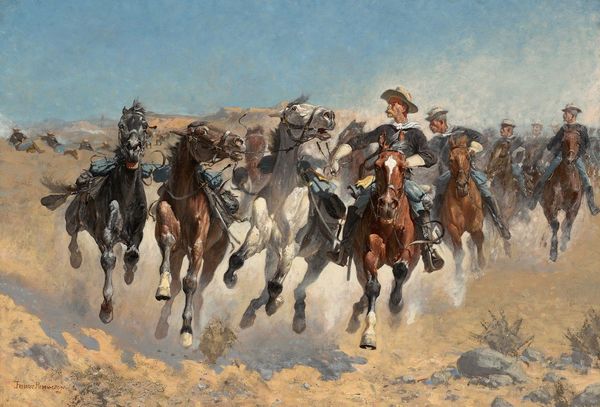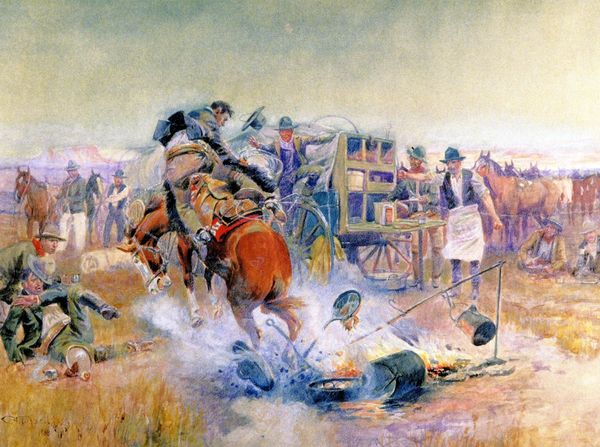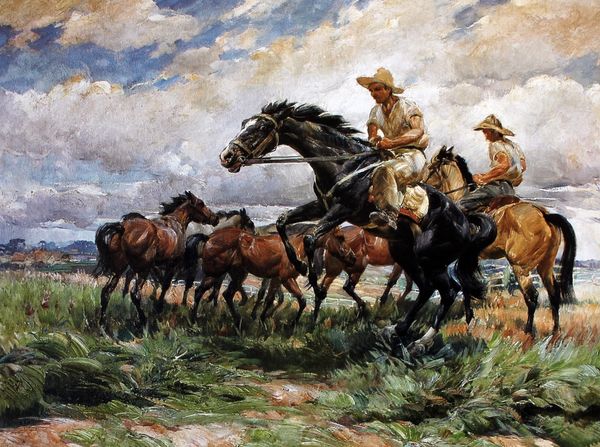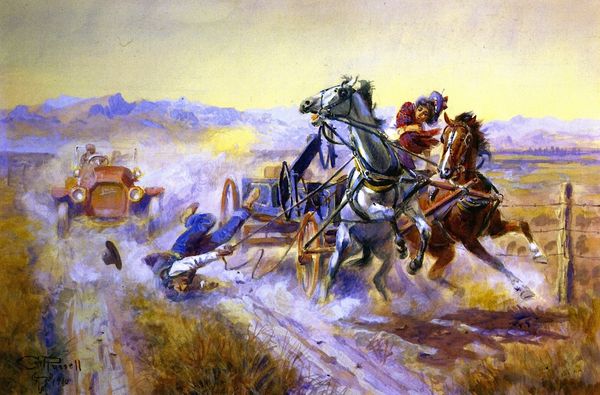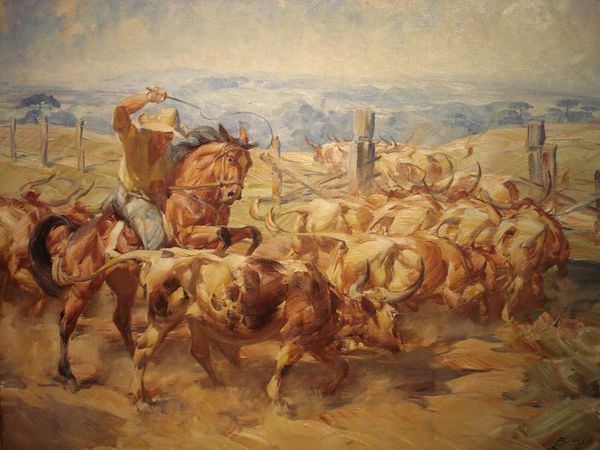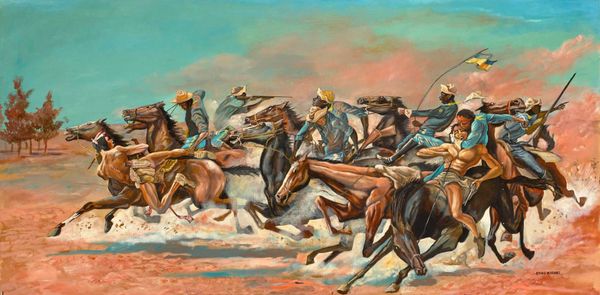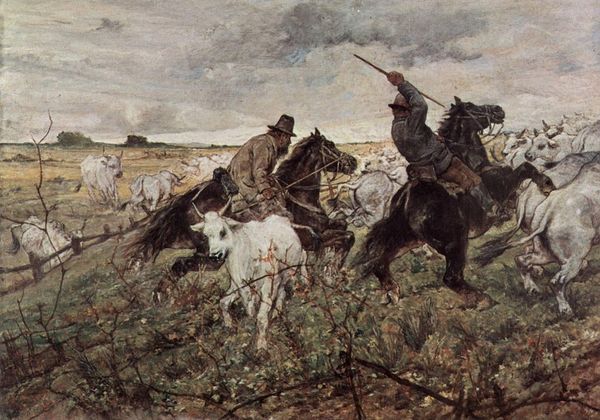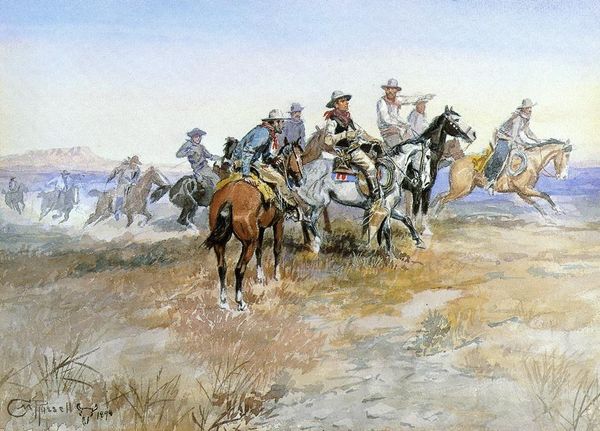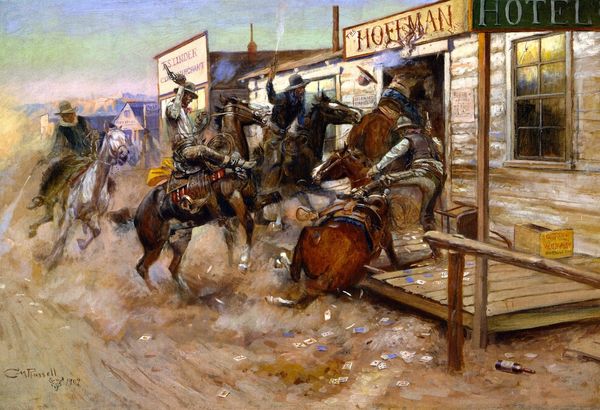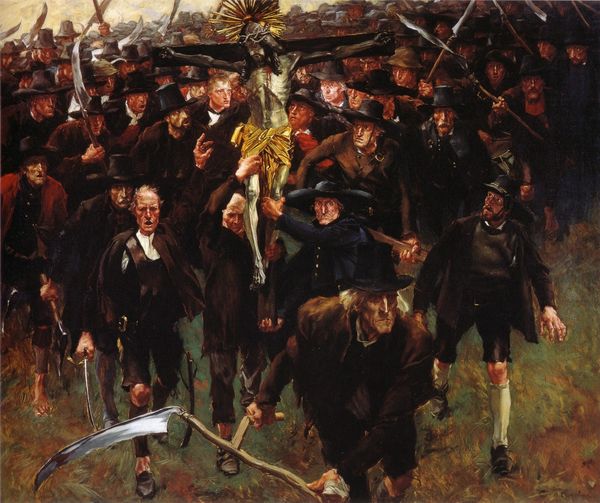
Copyright: Public domain
Editor: So, we're looking at Eugène Burnand's "Feuersnot," painted in 1879, with oil paints. The urgency really jumps out at me – they seem to be racing towards something awful. What do you see happening here? Curator: I see a society reacting to a potential crisis. The image resonates with anxieties common in late 19th-century rural life - fire being a constant threat to agrarian communities. Academic art like this played a crucial role in shaping national identity; paintings depicting rural life served to both romanticize the countryside and also implicitly to emphasize a social hierarchy that held it together. Editor: Hierarchy? How so? Curator: Notice the variety of people represented here: young, old, some holding tools, others urging on the horses. Consider how this image might function to emphasize communal solidarity and prescribed social roles in a dangerous situation – where everyone is doing their part to address the potential for great disaster. Do you notice how it reminds of idealized depictions of classical heroism? Editor: Now that you point it out, there is a resemblance! Especially in the composition and lighting... Curator: And those choices, lighting and composition, further reinforce how paintings like "Feuersnot" served to shape public understanding of history, community, and national identity through visual rhetoric, not just straightforward depiction. What I find fascinating is how academic painting created almost a self-fulfilling expectation of "nation". Editor: It's fascinating to consider how this painting is not just showing, but telling us a story about shared responsibility and collective action. Thanks for a brilliant tour behind the curtain! Curator: The pleasure was all mine!
Comments
No comments
Be the first to comment and join the conversation on the ultimate creative platform.
